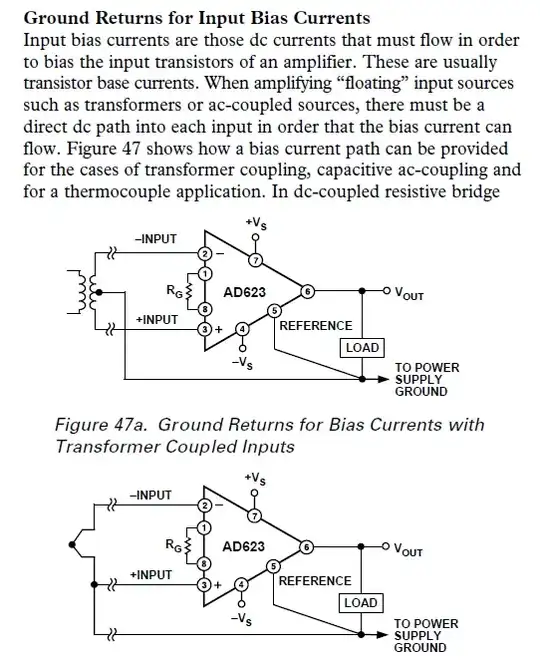Well, this is a toughie -- though fairly simple. Does anyone have experience with board twist affecting your circuit?
We have a board design that is supposed to measure a loadcell. We have finally tracked a system accuracy fault down to the amp IC. When we twist the board, the amp IC changes its output.
_
Added RM:
Circuit:

Gain is 100,000 / R7 =~ 454.5 according to datasheet p15.
I get +80mV when I twist the board from its 4 corners. I'm using the amount of twist that I use to unlock my car with my car key. I get -80mV when I twist the other way. The amount of twist is proportional to the variance in output voltage.
Alternatively, if I put, say, typical pencil pressure on the top of the IC, I get +20mV. This is the most sensitive corner of the IC near pin 1.
To isolate the amp circuit, I have shorted its input and disconnected other circuits from it so that what you see in the diagram is what we're testing with.
I'm stuck. What physics principle would cause this? How can I prevent it?
Notes:
- This is a system fault, not a single-board fault. It happens on all our boards.
- I have tried re-soldering the pins. That's not the problem.
- It isn't the gain resistor R7. I've put that on long leads to test its twist separately. Twisting it doesn't make any difference.
- The resistor R7 is 220 ohms which equals an amp gain of 456
- The power supply rail, AVdd, measures steady at 3.29V
- The IC is the industry-standard AD623ARM (uSOIC package)
- For those who really must see it, here is the board -- though I'm afraid that it will raise more red herrings than answers:

